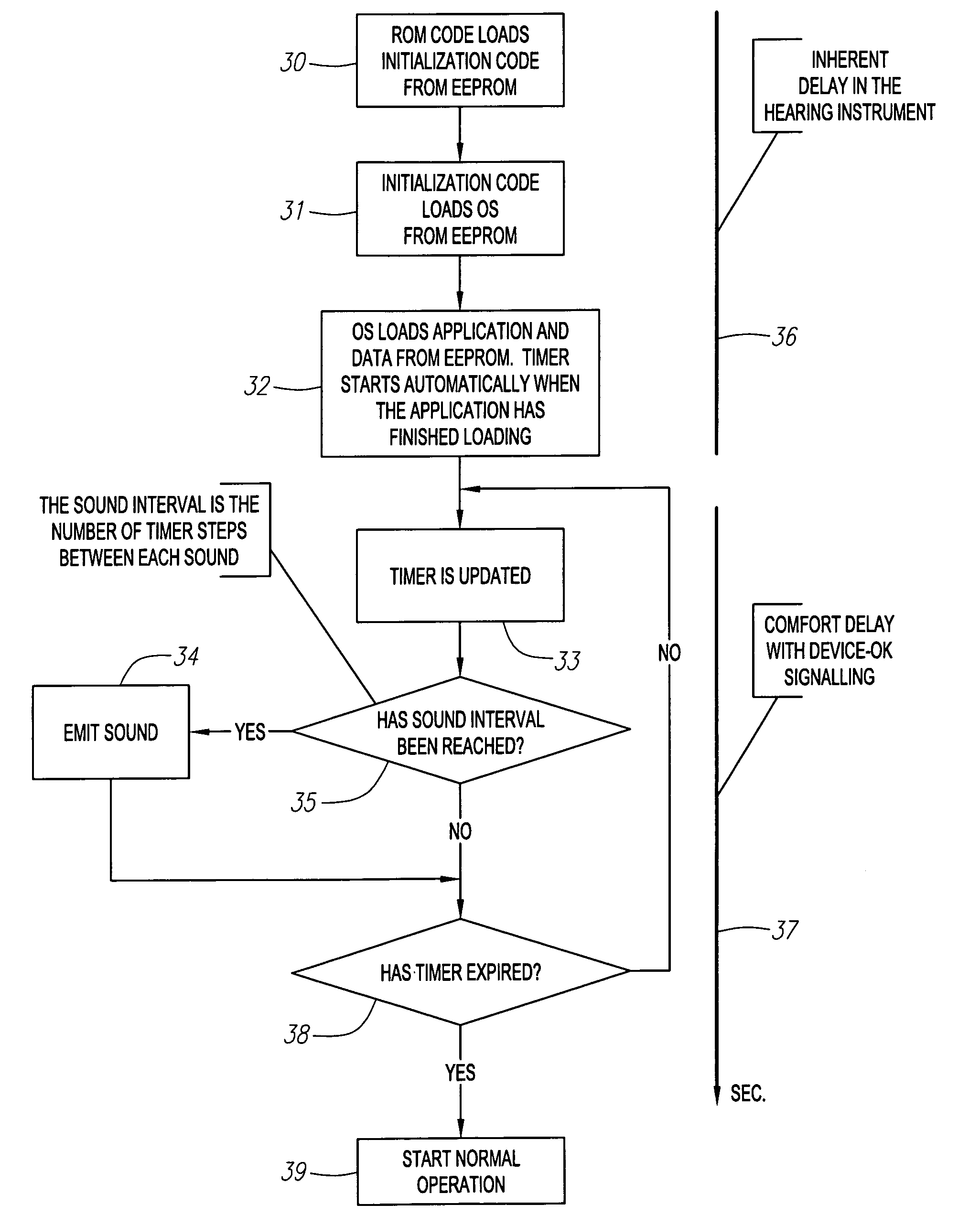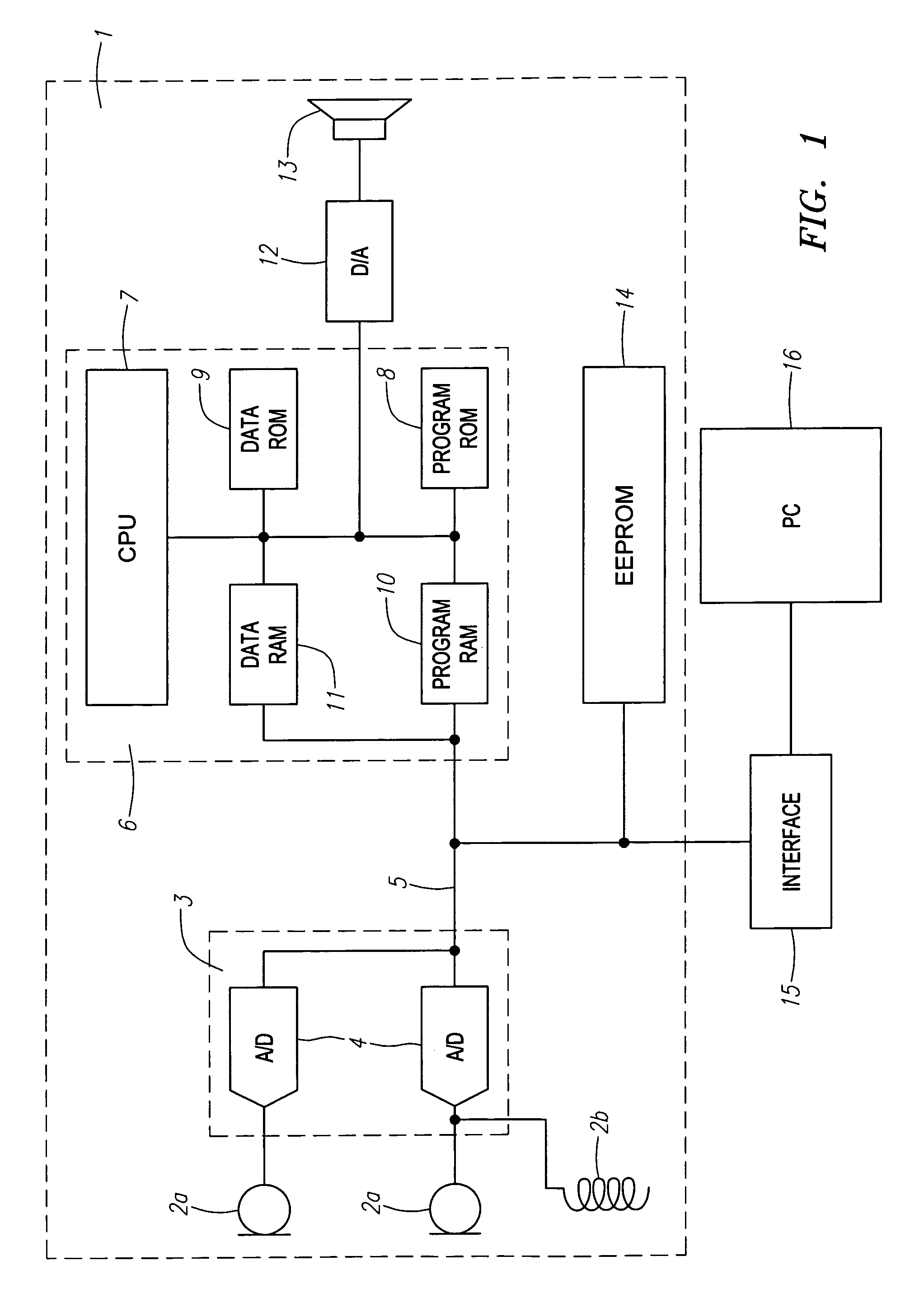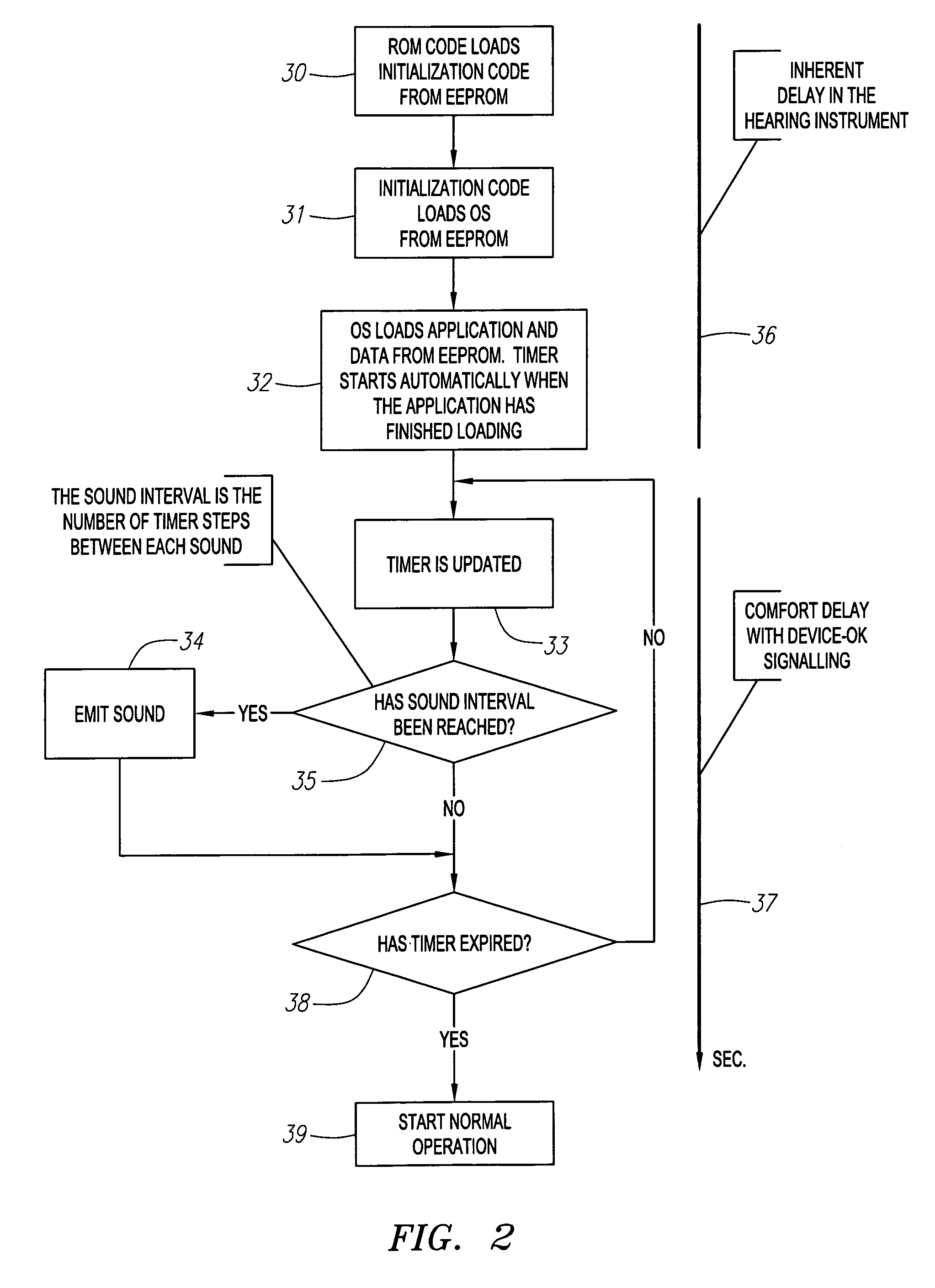Hearing aid with delayed activation
a delay activation and hearing aid technology, applied in the field of hearing aids, can solve the problems of user doubt as to whether the device is able to function or not, and achieve the effects of reducing the interval, avoiding troublesome oscillation, and reducing the amplification of the hearing aid
- Summary
- Abstract
- Description
- Claims
- Application Information
AI Technical Summary
Benefits of technology
Problems solved by technology
Method used
Image
Examples
Embodiment Construction
[0021]The invention will now be described in more detail in connection with a fully digital hearing aid 1, e.g., a programmable CIC hearing aid. An example of such a hearing aid according to the invention is shown schematically in block diagram form in FIG. 1. The hearing aid 1 comprises one or more sound receivers 2, which in the illustrated example, takes the form of two microphones 2a and a telecoil 2b. The analog signals for the microphones are coupled to an analog-digital converter circuit 3, which comprises an analog digital converter 4 for each of the microphones.
[0022]The digital signal outputs from the analog-digital converters 4 are coupled to a common data line 5, which leads the signals to a digital signal processing and adapter circuit 6. This circuit, which, for example, can be in the form of a digital signal processor (DSP), and which is explained in more detail later, is programmed to effect the necessary operations on the digital signals with the view to carrying ou...
PUM
 Login to View More
Login to View More Abstract
Description
Claims
Application Information
 Login to View More
Login to View More - R&D
- Intellectual Property
- Life Sciences
- Materials
- Tech Scout
- Unparalleled Data Quality
- Higher Quality Content
- 60% Fewer Hallucinations
Browse by: Latest US Patents, China's latest patents, Technical Efficacy Thesaurus, Application Domain, Technology Topic, Popular Technical Reports.
© 2025 PatSnap. All rights reserved.Legal|Privacy policy|Modern Slavery Act Transparency Statement|Sitemap|About US| Contact US: help@patsnap.com



